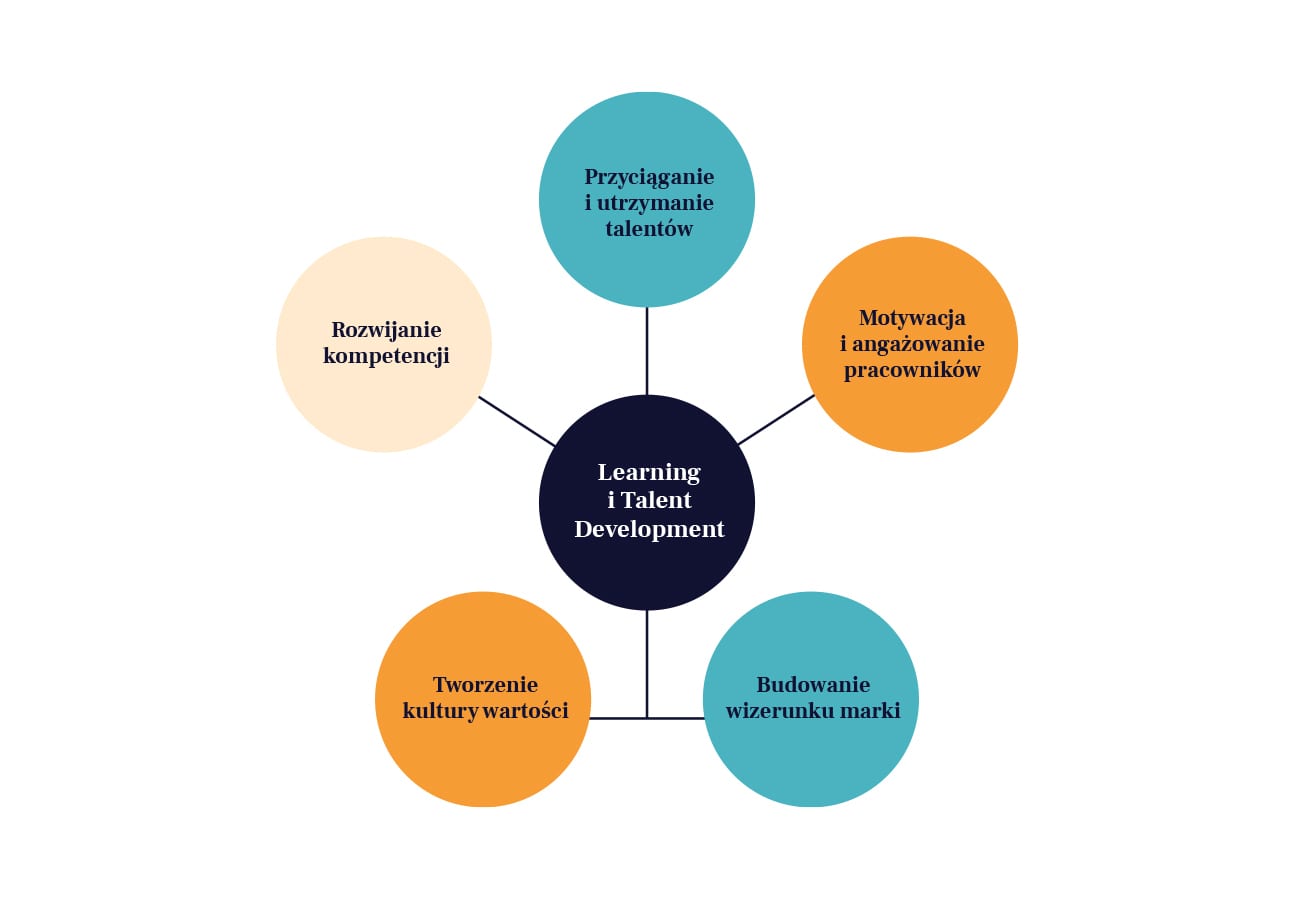The following article is written by Barbara Trepkowska – Content Manager at HCM Deck. Thanks for contributing to our blog!
Various studies reveal that the greatest modern organizations need qualified staff, knowledge, and efficient leaders to achieve high financial results. All these goals can be met thanks to centralized Learning & Development schemes. Effective L&D activities can have a powerful impact on key areas of how an organization operates, as they embrace employee development at all stages of the employee life cycle. These L&D activities include attracting and recruiting new talents.
The strategic role of L&D
The basic function of L&D is to ensure employee development in a way that supports the company’s business goals. According to McKinsey & Company [1], L&D can successfully strengthen five strategic areas in an organization:

All of these are closely related to particular stages of the employee life cycle. For instance, during onboarding, new employees can learn the skills necessary to perform their duties or learn how to use special software required for their job. While running regular performance reviews and defining skills gaps among employees, you can plan employee development at your company by making use of training or leadership shadowing, if the person undergoing the training is considered as a candidate in succession planning. Interestingly, L&D programs come in handy in the processes of offboarding and outplacement as well, when you plan activities aiming to help your exiting employees in finding new employment. What is the function of L&D at the initial stages of the employee life cycle?
L&D in attracting and retaining talents
By investing in L&D, you show your future and current employees that your organization offers them great personal development and career development opportunities. Why is that so important?
(Not only) millennials value development
The 2017 Gallup’s report [2] shows that 87% of millennials rate professional growth opportunities as important to them when choosing a job. The global labor market is experiencing a generation shift. At the moment of writing this article, millennials constitute over 34% of the active workforce in Europe. Numerous studies show that they will make up 75% of the global workforce by 2025.
Another study published by PwC [3] reveals that millennials value progress opportunities higher than salary. For 52% of them, career development opportunities were the main attraction in an employer and 65% of those surveyed said that they had accepted their job because of development opportunities.
However, development is important for other generations as well. According to Gallup’s report mentioned above, most millennials consider development opportunities as an important factor when choosing a job, and 69% of non-millennials say the same.
With strong L&D, you can show you care for your employees’ future
One of the important functions of L&D is to prepare your employees for the future. By properly diagnosing what kind of skills they lack and which competencies they need to develop, at the same time creating a good reskilling or upskilling plan, you will prove that your employees’ stable position is crucial to you.
It comes as no surprise then that many organizations include L&D in their CSR policies. This attitude will help you build your organizational culture based on values. Especially now, in the times of remote or hybrid work, nurturing the values of lifelong learning and development can create a sense of community among your employees. What is more, this approach will attract potential candidates who pay attention to CSR when choosing a new job. In fact, according to a study by Nielsen, up to 67% [4] of employees prefer to work for socially-responsible companies.
Enhance your employer branding
Although L&D has become extremely important in today’s world, there are still only a few companies that build distinctive L&D programs. According to Gallup [5], only 39% of millennials say that they have learned something new they can use to do their jobs better in the past 30 days. This is often caused by defining L&D as a series of courses, where employees acquire knowledge in a passive way. Hence, it is essential to create engaging development programs and to measure their effectiveness.
A holistic L&D program will certainly bring value to your organization and its role is of key importance these days. According to Glassdoor, up to 60% of respondents take development opportunities into account even before they apply for a given offer. If you haven’t done that yet, you need to start emphasizing the L&D opportunities when creating job offers.
L&D – advantage at the employees’ market
Modern L&D plans can give you a huge advantage in attracting and recruiting new employees. By building a holistic L&D program, you will strengthen the key areas of your organization, support your business, and attract valuable employees who want to develop their skills. Well then, let’s get the job done!
Index:
- https://www.mckinsey.com/~/media/mckinsey/business%20functions/organization/
our%20insights/elevating%20learning%20and%20development/elevating-learning-and-development-intro.ashx - https://www.gallup.com/workplace/238079/state-global-workplace-2017.aspx
- https://www.pwc.com/co/es/publicaciones/assets/millennials-at-work.pdf
- https://impactreporting.co.uk/csr-stats/
- https://www.gallup.com/workplace/236438/millennials-jobs-development-opportunities.aspx


